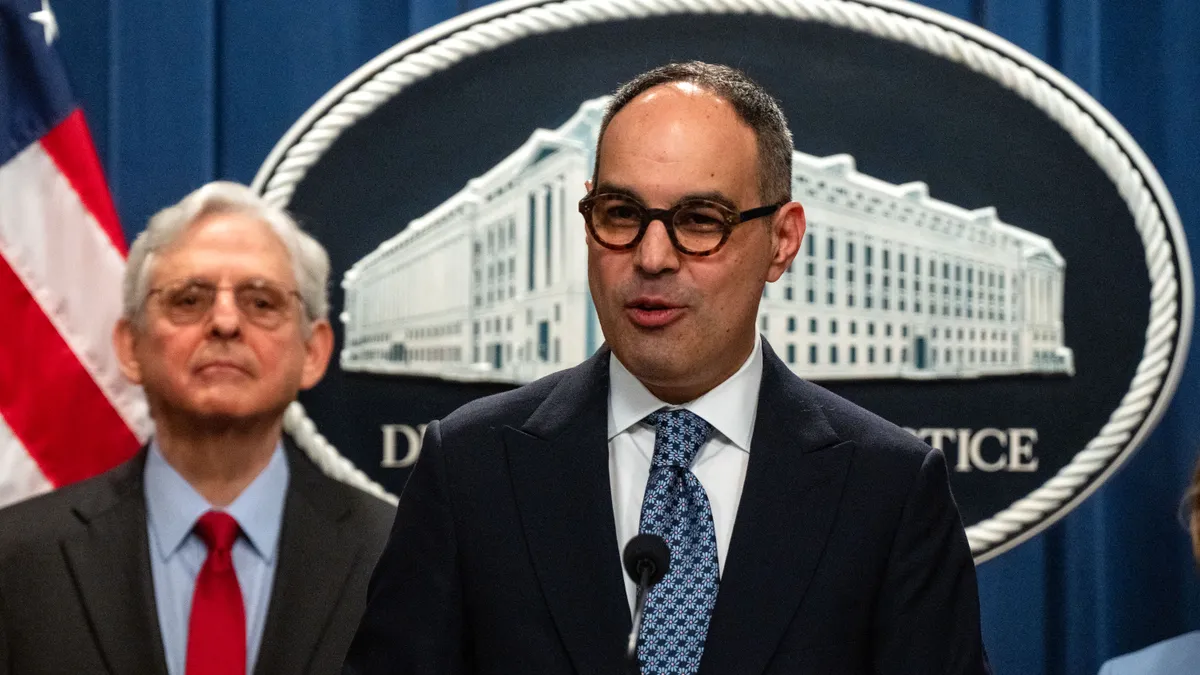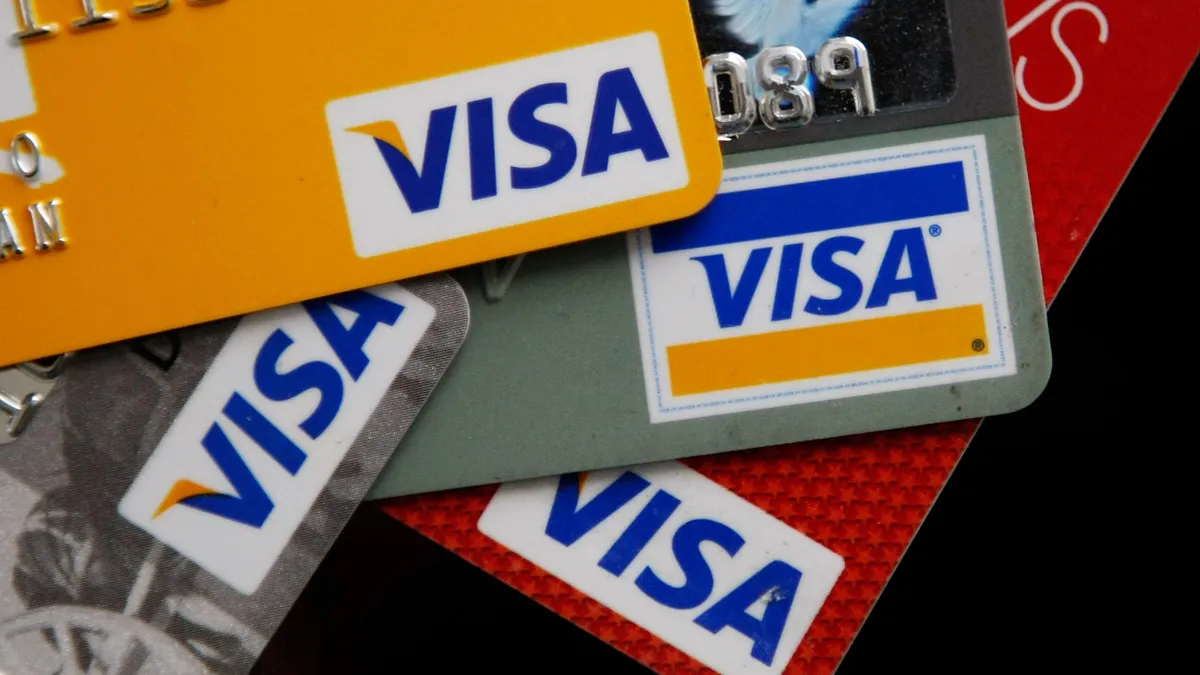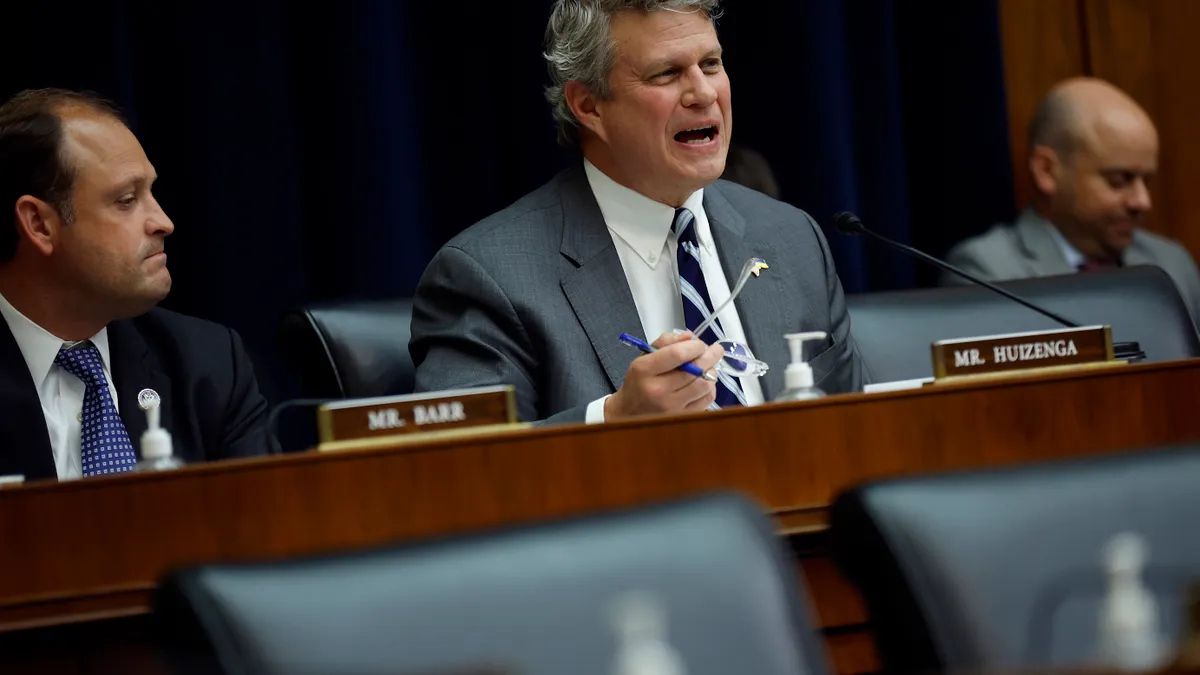Buy now, pay later firms bracing for potential new rules from the Consumer Financial Protection Bureau may have gleaned some clues about what comes next at an industry conference this week.
It became clear at one panel discussion that the agency is particularly concerned with how consumers can dispute transactions with BNPL providers.
“The biggest area we found of potential concern is disputes,” CFPB Program Manager Laura Udis said during a Monday panel discussion at the Nacha Smarter Faster Payments conference in Las Vegas. “We’ve seen that consumer concerns about disputes and billing is a high area of complaint to the CFPB.”
She offered the usual disclaimer, that she was expressing her own views, and not necessarily those of the agency, and then proceeded to provide insights into the agency’s thinking. Udis is the agency’s manager for small dollar, marketplace and installment lending, including BNPL, in its research, markets and regulations division.
When a shopper uses BNPL to make a purchase, the consumer can take possession of a product or access a service immediately, then pay for the purchase over time with installment payments, typically four payments over four to six weeks. A key lure for consumers is that there are no interest fees on some BNPL services, as long as subsequent payments are made on time.
“So, one concern is how disputes are being handled,” Udis said. “That seems to be a pain point for consumers.”
Udis explained how BNPL use surged during the pandemic as consumers tapped it more frequently to buy online. That led to more consumer dissatisfaction with products arriving at homes damaged, late or different from what was expected, she said. As a result, consumer disputes with the BNPL payment providers ensued.
Consumers who undertook a dispute with a BNPL provider may have been particularly disturbed that they were required to keep making payments, even during the period when there was no resolution of the dispute, whereas credit card companies typically put payments on hold until a dispute is resolved, Udis said.
CFPB action coming?
Other BNPL trouble spots that have attracted the agency’s attention include how BNPL terms and the costs of that credit are disclosed and how that compares with more traditional forms of credit, Udis said. She noted that consumers may not easily be able to change their method of payment after they initially sign up for BNPL services with either a debit or credit card account.
The concerns she expressed echoed “areas of risk of consumer harm” the CFPB identified when it issued a report on BNPL last September, stating that it might issue rules or guidance for the emerging industry.
In addition, the CFPB may consider standardized disclosures, Udis said. She also mentioned the agency is reviewing supervisory examinations and supervisory authority that might be appropriate for BNPL oversight.
Sitting next to Udis during the panel discussion was Harris Qureshi, director of public policy and regulatory affairs at the BNPL provider Afterpay, a unit of Block. He put attendees on notice that he wouldn’t be battling Udis during the discussion, and suggested they wait for the Gervonta Davis vs. Ryan Garcia boxing match in the city later this month if they wanted that action. Instead, he highlighted areas of agreement between Afterpay and the agency.
“We’ve been working collaboratively with Laura and with folks at the CFPB to better understand those risks, as they’ve raised them, the benefits as they’ve raised them as well, and how do we mitigate those quickly,” he said.
He noted that Afterpay has worked closely with lawmakers and regulators in Australia to build a code of conduct for how BNPL works in that country. “We definitely are also thinking about ways to maintain the right safeguards, and the right protocols, to set the right standard for what BNPL here looks like,” he said.
As part of its research ahead of issuing the report, the CFPB in late 2021 queried Afterpay as well as its rivals, including San Francisco-based Affirm, the Swedish BNPL giant Klarna, digital pioneer PayPal and the Australian company Zip, about their business practices. Since then, tech behemoth Apple has also entered the BNPL market.
BNPL credit reporting remains elusive
BNPL use surged tenfold between 2019 and 2021, the CFPB said in its report last year, and presumably has continued to expand. Consumers can use it on apps, but it’s also showing up more frequently on store point-of-sale systems. Also Afterpay expanded online by beginning a subscription service last year, which lets consumers make recurring payments in installments.
Meanwhile, BNPL players are also coming under more pressure from investors to finally turn a profit after years of losses, especially in light of a possible recession. Some BNPL players, including Klarna and Affirm have cut employees as the economic climate has worsened.
In that environment, the CFPB is increasingly uneasy about consumers potentially over-extending themselves with the BNPL option by “credit stacking,” or making purchases using multiple BNPL tools. That apprehension is partly driven by there being limited reporting to credit bureaus at this time, Udis noted.
That lack of BNPL credit reporting is a problem, suggested the panel’s moderator, Gary Stein, a former CFPB deputy assistant director who is now head of regulatory and compliance advisory at the consulting firm 99FinTech. It’s not sound to have a method of payment that consumers are using to dodge the financial industry’s credit reporting and scoring system, he said.
“That doesn’t sound to be a sustainable ecosystem and I think the real ask is for the bureau and the furnishers to figure out how to weigh the activity,” Stein said.
Despite the bureau encouraging the development of such tracking, little progress has been made in adapting bureau reporting processes for BNPL.
Timing of a CFPB move
To be sure, Udis said, there are potential BNPL benefits, including that it may provide credit to consumers at a lower cost, or no cost at all. The agency will be keen to see how consumer behavior changes in the current inflationary and high-interest rate environment, she noted.
”We do expect some increased demand in the BNPL market in the near-term, and so that’s another thing we’re going to be paying attention to,” she said.
As for when the agency plans to move ahead with any action, Udis wouldn’t comment on the agency’s timeline.
“We are still working through and looking at some of those next steps,” Udis said. “Some of it is quite complicated.”
She suggested in a conversation after the panel discussion that the bureau might pursue some action in at least one of the risk areas she mentioned as soon as this year.



















